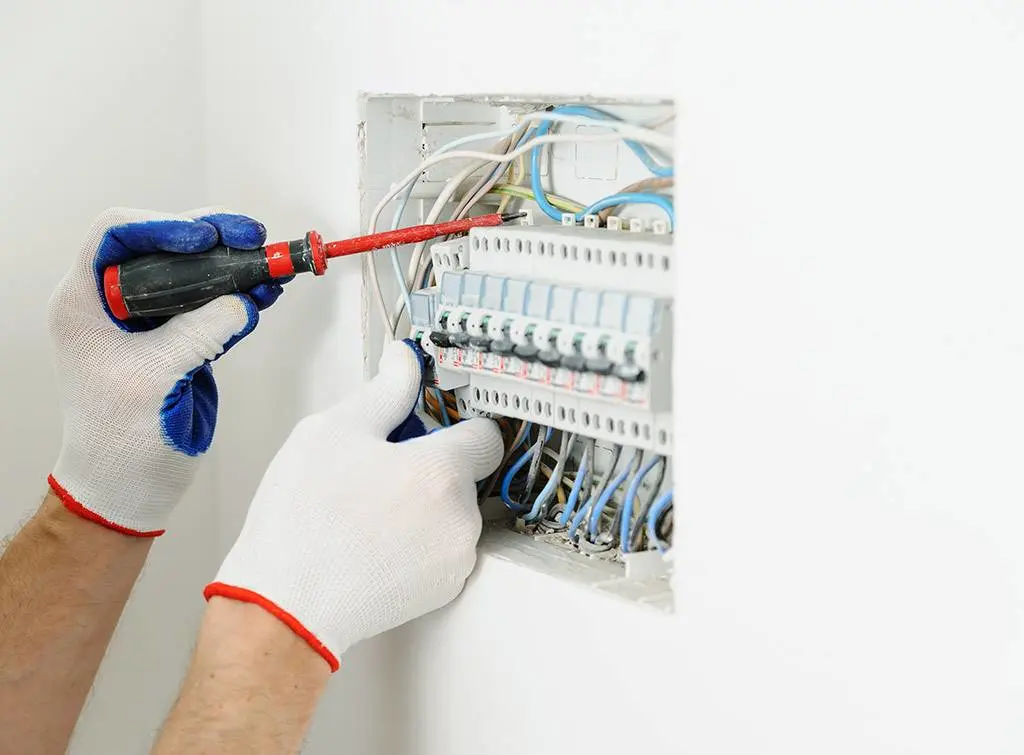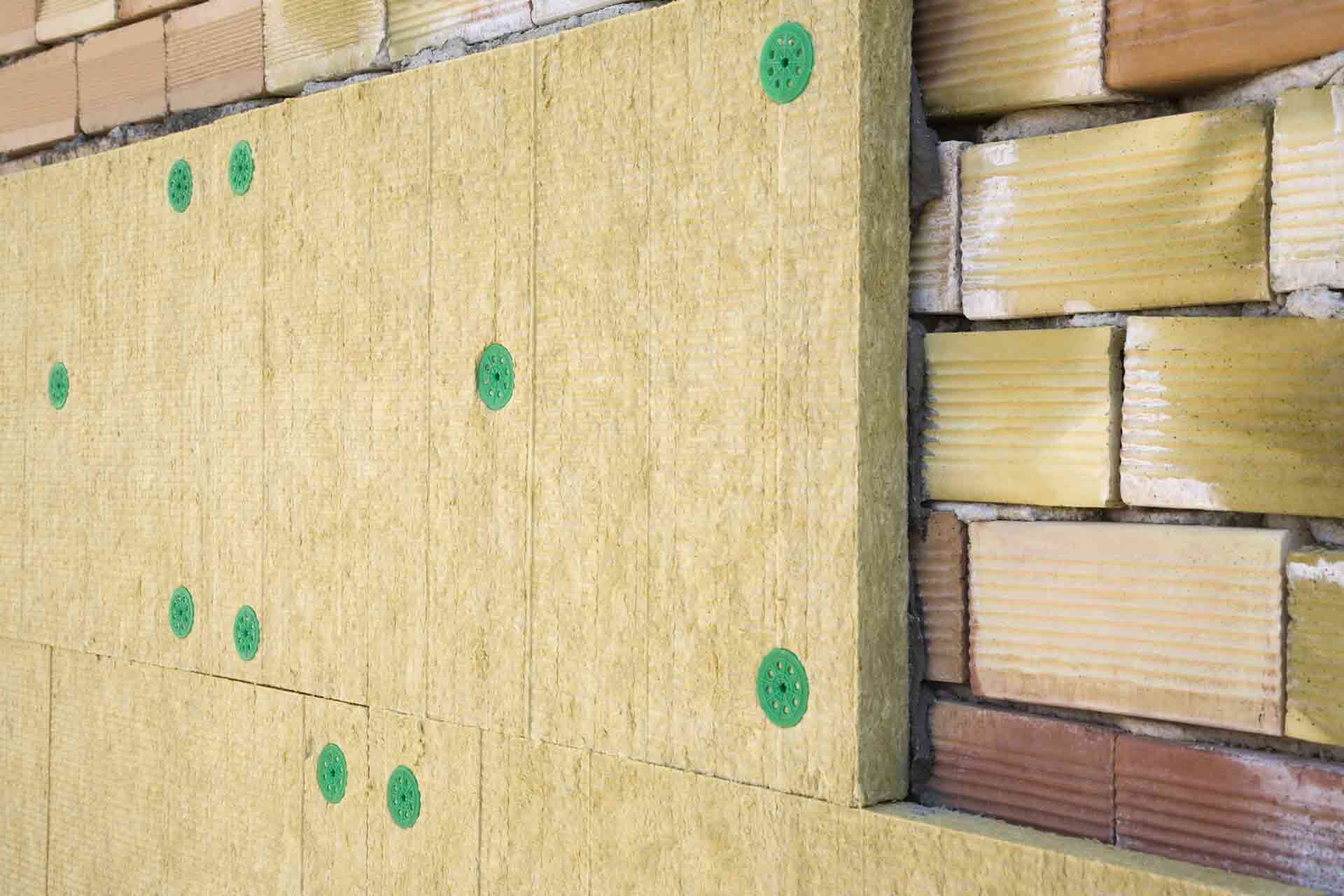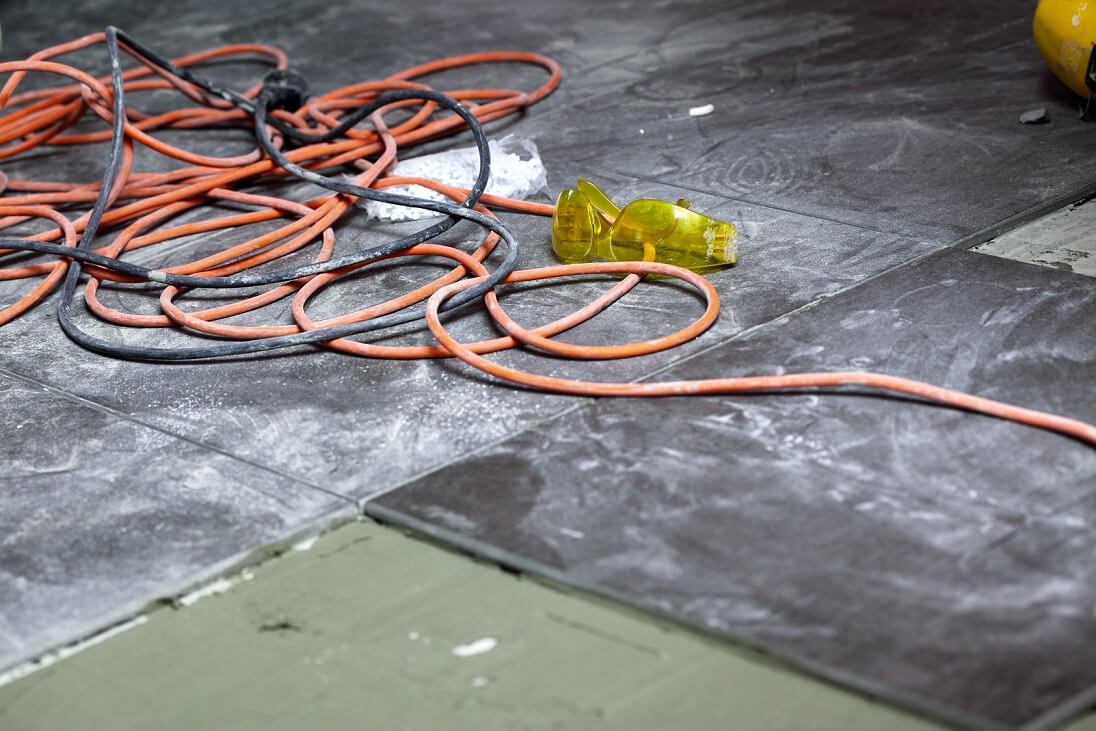Blog>Cost Guides>How much does consumer unit replacement cost in 2025?
Last updated: 9 January 2025
How much does consumer unit replacement cost in 2025?
Consumer units are the modern and safer version of fuse boxes. Here’s how much it costs to replace a consumer unit in the UK.

Fast Facts
The average cost of replacing a fuse box with a populated consumer unit (10-way RCBOs) is £485
Consumer units are a newer and much safer alternative to older fuse boxes
The larger your home is, the higher the capacity consumer unit or fuse box you will need
Before installing a new consumer unit, you’ll need an electrical inspection to ensure your wiring is safe
What is a consumer unit and why replace it?
What is a consumer unit?
A consumer unit is the more modern and safe version of a fuse box.
Anytime a fault or issue occurs, your consumer unit is responsible for cutting your property’s power in order to prevent fires and electrical damage.
In this way, it plays a vital role when it comes to you and your family’s safety – while also being integral to your electrical circuit.
Fuse box vs. consumer unit
Historically, fuse boxes were the most common electrical safety device.
They contain fuses that melt and cut the power whenever an issue with the electrical circuit occurs.
However, it can take a couple of seconds for the fuse to melt and break the electrical circuit. This may seem insignificant, but it greatly increases the risk of fires and electrical damage.
On the other hand, consumer units can detect electrical faults and instantly turn off the power, making them much safer. Plus, they can break the electrical circuit if the power in your home rises too high.
Common issues with outdated fuse boxes
It’s not illegal to have a fuse box in your property – but it isn’t recommended.
Here are some of the issues with outdated fuse boxes.
Don’t meet current electrical regulations (in most cases)
Not as easy to identify a faulty circuit
Increased risk of fires and electrical damage
Melted fuses have to be replaced before you can turn your power back on
The benefits of replacing a fuse box with a consumer unit
Replacing a fuse box with a consumer unit is beneficial for many different reasons. Here are the main ones.
Safer
More energy efficient
Lower energy bills
Meet current safety regulations
No need to replace fuses after power is cut
Reasons to replace an existing consumer unit
Although consumer units are newer and safer than fuse boxes, they also need replacing from time to time.
For instance, your consumer unit might become faulty or inefficient.
Alternatively, if you have an older consumer unit, this too might now be outdated.
In particular, some older consumer units don’t have a component known as an RCD (residual current device). This component is responsible for breaking the electrical current during a power surge – so, upgrading your consumer unit could reduce your risk of severe electrical fires.
Similarly, if you have a plastic consumer unit, replacing it with a metal or metal-clad one will enhance your safety as they won’t let an electrical fire spread as quickly.
Finally, you may wish to upgrade your fuse box or consumer unit to a larger capacity model, more able to cope with extra demand if you are extending your home.
How much does it cost to replace a consumer unit in the UK?
| Fuse box replacement costs | Average cost (+VAT) |
|---|---|
| Cost of populated consumer unit (10 way) - supply only (MCBs) | £120 |
| Cost of populated consumer unit (10 way) - supply only (RCBOs) | £250 |
| Meter tail cables | £4 per m |
| Cost to install consumer unit | £160 |
| Cost to replace circuit breaker | £52.50 |
| Cost to remove a fuse box or consumer unit | £75 |
| Electrical inspection | £210 |
| Electrician hourly rate | £45 |
| Last updated: December 2024 Our costs are ballpark averages - get a local tradesperson to quote now | |
Average cost of consumer unit replacement
The average cost of replacing a fuse box or consumer unit with a populated consumer unit (10-way RCBOs) is in the region of £485.
This will be the preferred option for the majority of homes.
However, larger and smaller homes may require more or less circuits.
As an example, a larger home that requires 12 circuits could cost closer to £800.
Meanwhile, a smaller home that needs just 6 circuits could cost as little as £350.
See the tradespeople we've checked and recommend for your job
Types of consumer units and their average costs
As the rules that govern how circuits are protected in the UK are quite precise, there are only a few different types of consumer units.
However, in combination with the circuit protection devices they house – MCBs, RCBOs and RCDs – they allow for infinite configurations and circuit design.
Here are the main types along with typical costs.
| Type of consumer unit | Cost (supply only) |
|---|---|
| Main switch consumer unit part populated | £30 - £200 |
| Dual RCD consumer unit part populated | £80 - £200 |
| High integrity consumer unit populated | £70 - £250 |
| Last updated: January 2025 Our costs are ballpark averages - get a local tradesperson to quote now | |
Dual RCD consumer unit
Supply cost: £80 - £200
Installation cost: £160
Dual RCD consumer units are popular with homeowners as they’re inexpensive. Plus, they’re easy to configure, so they’re often chosen by electricians.
They house two banks of MCBs protected by two RCDs.
The downside is that they offer virtually no circuit separation, meaning that when earth leakage is detected on one circuit, the RCD will cut power to all the circuits it is protecting. This can be a pain for homeowners, depending on what circuits are under that RCD.
Main switch consumer unit
Average supply cost: £30 - £200
Average installation cost: £160
Main switch boards independently protect all circuits against earth leakage with RCBOs.
This offers total circuit separation. But, since RCBOs are considerably more expensive than MCBs, this solution comes at a price.
High integrity consumer unit
Average supply cost: £70 - £250
Average installation cost: £160
High integrity consumer units arguably offer the best of both worlds.
With three neutral bars, these units allow for two banks of RCD/MCB protected circuits and a further bank of individually protected RCBO circuits.
The MCBs and RCDs are used for whatever the homeowner considers ‘standard’ circuits, for example lighting, sockets, oven and electric shower. If any of these circuits suffer earth leakage it doesn’t really matter that the RCD cuts power to all the circuits on that bank. This is a cost effective way of protecting multiple circuits from earth leakage simultaneously.
Meanwhile, the RCBOs are used on circuits that are considered ‘mission critical’ and should be separated from all other circuits and potential nuisance tripping.

Factors that influence the cost of consumer unit replacement
There are lots of different factors that can affect the cost of consumer unit replacement.
Here are some of the main ones.
Size of property
Bigger properties typically come with higher consumer unit replacement costs than small properties.
This is because they’ll usually need more circuits.
Here are some typical costs to supply and install a new consumer unit based on the size of property.
Terraced property: £350
Semi-detached property:£550
Large detached property:£750
Type of consumer unit
As we’ve already touched upon, there are several different types of consumer units.
Although installation costs will generally remain the same regardless of which type you choose, supply costs can vary.
Dual RCD: £80 - £200
Main switch: £30 - £200
High integrity: £70 - £250
Labour costs
As with any home improvement project, labour costs can vary based on factors like:
Your location
Your electrician’s experience
Whether you hire a company or sole trader
Whether it’s an emergency callout
The average hourly rate for an electrician is between £45 - £60.
Additional services
As you might expect, any additional work you have carried out at the same time as your consumer unit replacement will add to your costs.
For instance, you might require rewiring or you might choose to move your consumer unit at the same time as replacing it.
Meter tail cables: £4 per m
Moving consumer unit: £400
Moving consumer unit and incoming mains cable from the street: £2,000+
Cost breakdown for consumer unit replacement
Many electricians will provide you with an overall quote for consumer unit replacement.
But it can be helpful to know where your money is going.
So, here is a rough itemised breakdown for the job.
Cost to remove an old consumer unit
Removing your old fuse box or consumer unit typically costs around £75.
Cost to supply a new consumer unit
The average supply cost of a populated 10-way consumer unit is £120 (MCBs) or £250 (RCBOs).
Electrical inspection cost
Your electrician will need to carry out an Electrical Installation Condition Report (EICR) to make sure that your existing wiring is in good condition, as well as issuing you with an Electrical Installation Certificate (EICR) for the replaced consumer unit.
Electrical inspections typically cost around £210.
Additional wiring or components
Any additional work required will typically incur extra costs.
You’re looking at around £4 per m for meter tail cables.
Meanwhile moving your consumer unit typically costs around £400, or moving your consumer unit along with the incoming mains cable from the street could cost £2,000+.

Find a qualified electrician for your fuse board replacement
Now you know all about consumer unit replacement, it’s time to find the best electrician for the job.
We’re so confident in the quality of the trades on Checkatrade that if you book through us, we guarantee their work up to £1,000 (guaranteed for 12 months – eligibility and T&Cs apply).
Simply enter your postcode into the search box below to find an electrician near you.
See the tradespeople we've checked and recommend for your job
Why hire a qualified electrician for fuse box replacement?
Aside from being a legal requirement, hiring a qualified electrician for fuse box replacement comes with so many benefits.
1. Safety
An electrician will have the tools, skills and experience needed to make sure your consumer unit is as safe as it can be. This will give you peace of mind.
2. Expertise
A qualified electrician will be able to advise you on the best consumer unit for your needs and install it to a high standard that will stand the test of time.
3. Regulations
A skilled electrician will have a thorough understanding of relevant wiring regulations to make sure your property is compliant as well as safe.

On Checkatrade, you'll only find trades who meet our high standards and pass up to 12 checks.
FAQs
Can I replace a consumer unit myself?
No, you can’t replace a consumer unit yourself. Rather, you’ll need the help of a qualified electrician who knows what they’re doing – both from a legal and safety standpoint.
What are the legal requirements for replacing a consumer unit?
Consumer unit upgrades have to comply with Part P of UK Building Regulations and are a notifiable work.
This means you legally have to get a certified electrician who’s registered with a government-approved scheme to install your consumer unit.
Once the work is complete, they’ll need to provide you with an EIC to prove and certify compliance with Part P.
What is the average cost of replacing a consumer unit in 2024?
The average cost of replacing a fuse box or consumer unit with a populated consumer unit (10-way RCBOs) is £485.
How long does it take to replace a consumer unit?
The bigger the consumer unit (meaning the more circuits it has), the longer it will take to install.
As a rough guide, you’re looking at anywhere from four to seven hours.
However, if you also need rewiring completed as part of the job, this could push the time up to several days or even over a week.
Is it mandatory to upgrade my fuse box to a consumer unit?
No, you don’t legally have to upgrade your fuse box to a consumer unit. That said, it is recommended as outdated fuse boxes aren’t as safe as modern consumer units.
Does replacing a consumer unit require rewiring?
Not necessarily. However, your electrician will need to test the wiring to check that it’s in good condition. If it isn’t, you’ll need to fix any defects, which could involve rewiring.
How often should a consumer unit be inspected or replaced?
Your consumer unit should be inspected at least every 10 years by a qualified electrician if your property is privately owned. Alternatively, if it’s a rental property, your consumer unit should be inspected at least every 5 years or when there’s a change of tenancy.
It may be time to consider a replacement if your consumer unit is…
Over 20 years old
Damaged
Regularly tripping
Making strange noises
Emitting strange smells
You’re extending your home
What happens during an electrical inspection before replacement?
Before your consumer unit is replaced, your electrician will need to carry out an electrical inspection to make sure that your existing wiring is in good condition.
This usually involves…
Visual analysis
Testing with specialised tools and equipment
Examination of individual circuits
Verifying existing installations match up-to-date building regs
Checking the main service panel
Creating a detailed report
See the tradespeople we've checked and recommend for your job
More Cost Guides
More Fuseboard / Consumer Unit Installation Articles
See the tradespeople we've checked and recommend for your job




